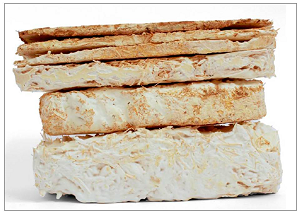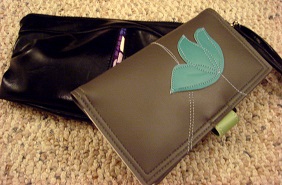Mankind has known leather for about seven thousand years, now. Leather is durable and versatile. And biodegradable. But it is produced as a by-product of the meat industry, in a process with much environmental pollution. So here’s the good news for vegans: leather-like materials (vegan leather) can be made from mushroom mycelium. With comparable properties and, if produced in large volumes, with comparable prices.

The Conversation, interesting source of information, recently ran an article by Mitchell P. Jones on this issue. He and his colleagues recently published an article in Nature Sustainability on vegan leather. This investigates the history, manufacturing processes, cost, sustainability and material properties of ‘fungus-derived renewable leather substitutes’; and compares them to animal and synthetic leathers.
Sustainability issues
Traditional leather suffers from a number of sustainability issues. It is produced from animal skins, mostly from cows, and therefore, leather is bound up with animal farming. This sector’s sustainability issues are well-known. Livestock farming produces high greenhouse gas emissions; according to the United Nations Food and Agriculture Organisation, the sector is responsible for about 14% of all greenhouse gas emissions. But: the main product of cattle rearing is meat, not leather. Cow hides account for just 5-10% of the market value of a cow. Moreover, the number of animals reared is not dependent on the demand for leather; rather, it is meat that propels demand. On the other hand: leather tanning is an energy and resource intensive process that produces a lot of sludge waste. And of course, artificial leathers produced from fossil feedstock, do not really solve these environmental problems.

So what does the alternative, vegan leather, look like? This product is made from mycelium, the root-like structure of mushrooms. It contains chitin and chitin-resembling polymers, as well as polysaccharides, forming a material that can be processed to an alternative for leather. These roots grow on most organic wastes, like sawdust or agricultural waste. The process is universal and can be carried out anywhere. It does not require light, and moreover, it converts waste into useful materials. The material is then treated with mild acids, alcohols and dyes to produce the vegan leather. The process is simple and does not require complicated industrial equipment.
Vegan leather pioneers
The authors stress that this technology is still in its infancy. Traditional leather production has been refined to perfection over thousands of years; but this process is new, and surprises may be around the corner. Nevertheless, they say, vegan leather may be a step in the right direction. Industry has now evolved to a stage in which it can commercialize its products. Prototypes were released last year in the US, Italy and Indonesia, in products including watches, purses, bags and shoes. These articles are still a bit pricey, but scaling up the process could bring costs down.
And pioneers have been on the market for a while already. Ecovative Design, a company that started out producing mycelium-based packaging, now develops leather-like materials as well. MycoWorks produces ‘Reishi’, a vegan leather described by its CEO as ‘it feels like leather, it looks like leather, so we talk about it as leather, but it’s not leather.’ The company raised US$17 million in venture capital last year. Then there is Bolt Threads, that produces very fashionable articles made of vegan leather. And MOGU produces a whole range of mycelium-based products, ‘ranging from foam-like, soft textures to compact, resilient surfaces.’ They have compiled a ‘Mogu Sample Box’ with all diversity of their ‘innovative, technically feasible and honest’ materials. Vegan leather my just be here to stay!
Author
Diederik van der Hoeven
Source
Supplier
Bolt Threads
Ecovative Design LLC
Mogu Srl
MycoWorks
Share
Renewable Carbon News – Daily Newsletter
Subscribe to our daily email newsletter – the world's leading newsletter on renewable materials and chemicals









